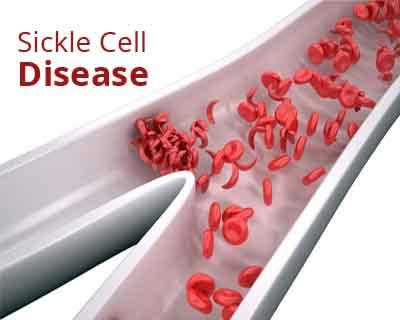- Home
- Editorial
- News
- Practice Guidelines
- Anesthesiology Guidelines
- Cancer Guidelines
- Cardiac Sciences Guidelines
- Critical Care Guidelines
- Dentistry Guidelines
- Dermatology Guidelines
- Diabetes and Endo Guidelines
- Diagnostics Guidelines
- ENT Guidelines
- Featured Practice Guidelines
- Gastroenterology Guidelines
- Geriatrics Guidelines
- Medicine Guidelines
- Nephrology Guidelines
- Neurosciences Guidelines
- Obs and Gynae Guidelines
- Ophthalmology Guidelines
- Orthopaedics Guidelines
- Paediatrics Guidelines
- Psychiatry Guidelines
- Pulmonology Guidelines
- Radiology Guidelines
- Surgery Guidelines
- Urology Guidelines
Sickle Cell Anaemia revisited

Sickle cell anaemia is an inherited form of anaemia — a condition in which there aren't enough healthy red blood cells to carry adequate oxygen throughout your body.
Healthy red blood cells are round, but for those with sickle cell disease, the red blood cells become sticky and hard because of an abnormal amount of protein in the blood. The red blood cells from the shape of a sickle or crescent. This change in shape can cause the blood cells to stick together and block off small blood vessels, which can lead to pain, organ damage, infection, acute chest syndrome, and stroke. Sickle cells also die early, causing a constant shortage of red blood cells.
Currently, the only cure is a blood and bone marrow transplant (also called stem cell transplant), but the procedure is complex and risky, and few people with the sickle cell disease are good candidates for the procedure. For now, managing the disease and its symptoms is the best way to ensure normal health and lifespan.
How Do You Get Sickle Cell?
Sickle cell disease (SCD) is a group of inherited diseases and affects about 100,000 Americans.
It is most common among those of African descent but also can affect people with a Hispanic background.
SCD has several types:
- HbSS: If you inherit two sickle cell genes — one from each parent — you will develop sickle cell anemia, the most severe form of the disease.
- HbSC: If only one parent passes on the sickle cell gene and the other parent passes on a gene from the abnormal hemoglobin protein called “C,” you will have a milder form of sickle cell disease.
- HbS beta thalassemia: One parent passes on the sickle cell gene and the other passes on the gene for beta thalassemia, which is a type of anemia. Two types of beta thalassemia exist, with one type, “O,” being more severe than the second type, “+.”
Several rare types of SCD also exist, based on inheriting a sickle cell gene and an abnormal type of hemoglobin.
Sickle cell trait:
If you inherit the sickle cell gene from one parent and a normal gene from the other parent, you will have the sickle cell trait (SCT). Those with the sickle cell trait usually have no signs of the disease, but they can pass the trait on to their children.
Symptoms of Sickle Cell
Newborns in the U.S. automatically are tested for sickle cell disease, which allows parents time to learn about the disease and prepare for it, since symptoms typically don’t appear until a baby is 5 to 6 months old.
Symptoms may vary in severity and include:
- Jaundice
- Fatigue from anemia
- Painful swelling of the hands and feet
If you have sickle cell, you may experience a pain crisis — an emergency condition when blood can’t flow to the organs. You may have extreme pain in the chest or stomach, trouble breathing, fever, fatigue, headache, seizures or changes in vision. If this happens, you should call 911 right away.
Treatments for SCD
Sickle cell disease is a lifelong condition, but you can take steps to stay healthy and lower the chances of having a crisis or complication. Sickle cell disease affects the spleen, which helps with the immune system. As a result, those with SCD have weakened immune systems and are more likely to get sick. Getting immunizations, avoiding anyone who’s sick and washing hands frequently are good ways to stay well.
Additional measures to stay healthy include:
- Taking medications as recommended by your doctor
- Staying hydrated and avoiding overexertion
- Avoiding extreme temperatures, which can set off a crisis
- Learning ways to manage pain, such as warm baths, massage therapy, physical therapy, and acupuncture
- Taking care of the mental stress of a chronic disease by talking with your doctor or counselor
Sickle cell disease is a serious lifetime illness, but working with your medical team to proactively manage your systems can create the best opportunity for your long-term health.

Disclaimer: This site is primarily intended for healthcare professionals. Any content/information on this website does not replace the advice of medical and/or health professionals and should not be construed as medical/diagnostic advice/endorsement or prescription. Use of this site is subject to our terms of use, privacy policy, advertisement policy. © 2020 Minerva Medical Treatment Pvt Ltd